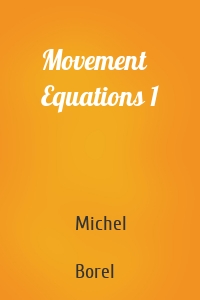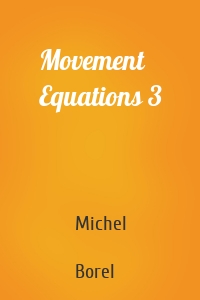Michel Borel
4 кн.
Movement Equations 1
The set of books on Mechanical Engineering and Solid Mechanics, of which this book is the first volume, is an essential tool for those looking to develop a rigorous knowledge of the discipline, whether students, professionals (in search of an approach to a problem they are dealing with), or anyone else interested. This volume deals with the elements required for establishing the equations of motion when dealing with solid bodies. Chapter 1 focuses on the systems of reference used to locate solid...
| Автор | Michel Borel |
Movement Equations 3
This volume is the focal point of the work undertaken in the previous volumes of this set of books: the statement of the fundamental principle of the dynamics whose implementation, according to two paths whose choice depends on the problem to be treated, leads to equations of motion. In order to achieve this, it is treated first of all in the context of solids in their environment, as a prerequisite for the formulation of the fundamental principle. Then, in addition to its use in some exercises,...
| Автор | Michel Borel |
Movement Equations 2
The formalism processing of unbuckled solids mechanics involves several mathematical tools which are to be mastered at the same time. This volume collects the main points which take place in the course of the formalism, so that the user immediately finds what he needs without looking for it. Furthermore, the book contains a methodological formulary to guide the user in his approach.
| Автор | Michel Borel |
Movement Equations 4
An important instance of the application of unbuckled solid mechanics is that of its stability and small movements from this situation. The problem expressing goes through the linearization of the movement equations set up in the 3rd volume of this treaty, by their limited development. This book gives and develops the process which leads to the differential linear equations expressing this kind of movement and allowing the study of the equilibrium and the stability of an unbuckled solid.
| Автор | Michel Borel |





